Given the highly competitive work environment, everyone wants to find job prospects where they have growth prospects. Additionally, companies also prefer employees who are developing. That’s why it’s crucial for companies to have effective training programs to help workers get better and stay ahead in the market.
Training isn’t just about ticking off HR checklists; it’s crucial for employee engagement, productivity, and better business results.
Did you know that companies with strong learning cultures are 52% more productive and see a 30–50% increase in employee retention?
So, if you want to build a skilled, efficient, and prepared team to face challenges, keep reading. This blog post will detail ten successful workplace training programs that deliver positive results.
1. Onboarding and Orientation Training
Joining a new organization can be taxing for any person. Fitting into new work cultures, getting new assignments, and trying to understand all the strange acronyms that might initially be troubling. An effective onboarding training program ensures that new employees not only get through the initial stages but also excel and succeed.
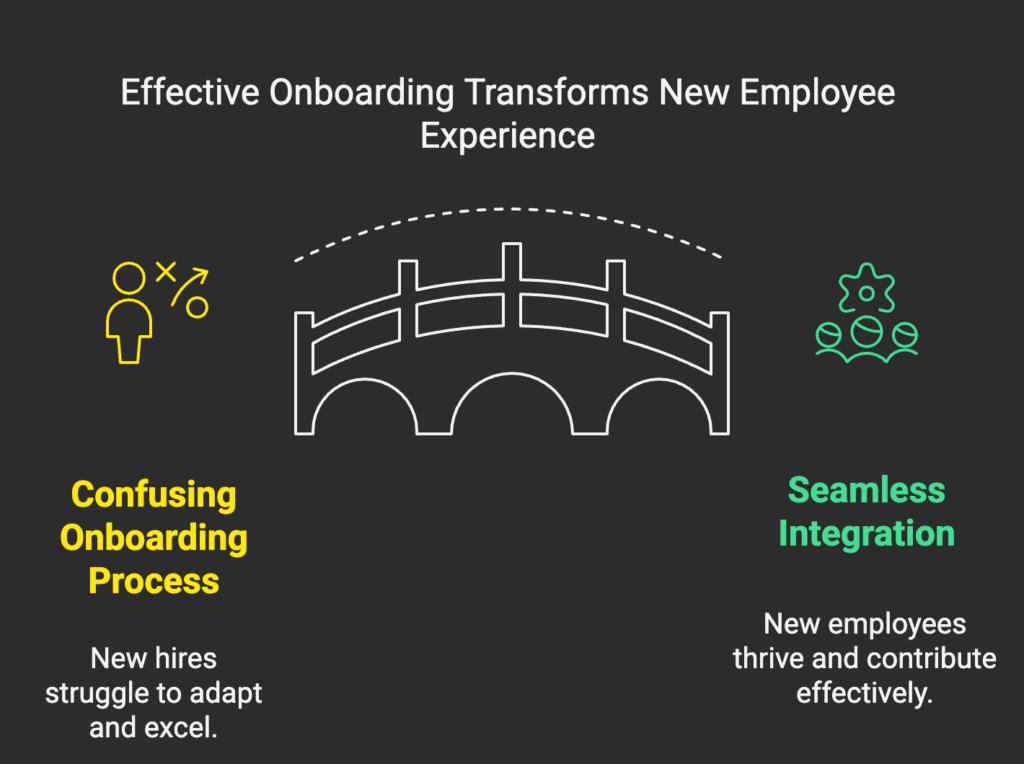
Check out this blog on Product-led onboarding training.
Why it matters:
- Structured onboarding improves new hire retention by 82%.
- It cranks up productivity because when people know what they’re doing, they actually do it better.
What a great onboarding program looks like:
- A warm welcome that goes beyond the usual paperwork.
- Clear expectations and goals from day one.
- A buddy system—because everyone needs a go-to person.
- Ongoing check-ins to avoid that “lost in the wilderness” feeling.
Nobody likes feeling confused on their first working day. A powerful onboarding program makes sure that doesn’t happen.
2. Leadership Development Training
Have you ever experienced working with a bad manager? It can be tough. Nevertheless, the good news is that impactful leadership aptitudes can be learned, and when executed correctly, they can make a favorable impact on both individuals and teams as a whole.
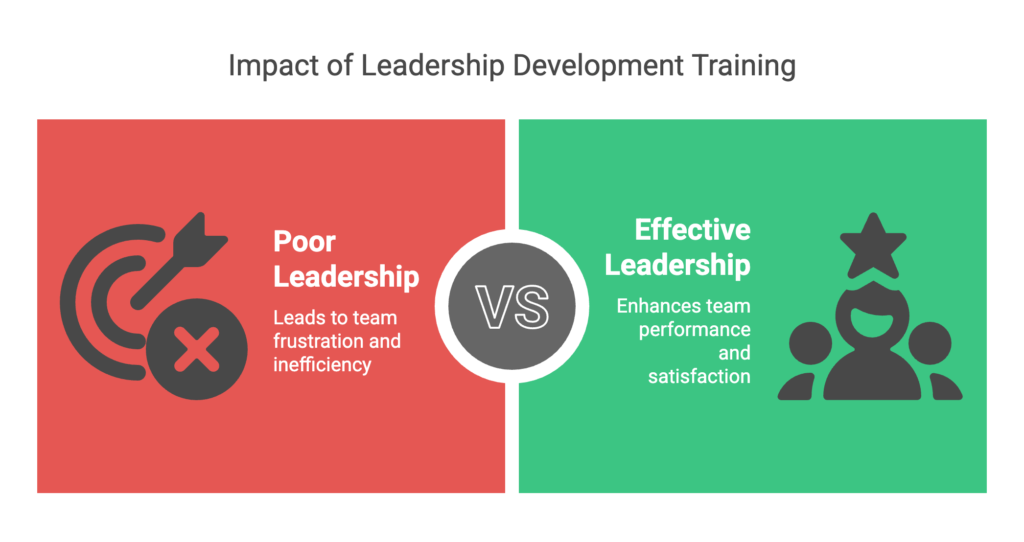
Why leadership training is a game-changer:
- Organizations that adopt leadership development are 2.4 times more likely to meet their performance targets.
- 77% of businesses admit they have a leadership gap.
What leadership training should cover:
- Decision-making under pressure
- Emotional intelligence
- Conflict resolution
- Mentorship skills
Investing in leadership isn’t just about one day; it’s about securing a stronger future.
3. Diversity, Equity, and Inclusion (DEI) Training
Diversity, equity, and inclusion are not just some trending terminologies in human resources – they are imperative for ensuring that everyone in the organization feels welcomed. In addition, companies that support diversity, equity, and inclusion don’t just feel good; they actually perform better.
Why DEI training is a must:
- Organizations that promote diversity are 35% more likely to outperform their competitors.
- 67% of job seekers prioritize diversity when selecting where to work.
What makes DEI training effective?
- Addressing unconscious bias
- Creating an inclusive culture that celebrates differences
- Promoting honest conversations without worrying about judgment
- Setting clear guidelines to ensure fairness across the board
4. Technical Skills Training
Technology is moving forward quickly, and workers must keep up to date to avoid falling behind. It is important to stay informed about the latest software and learn how to use new digital tools.
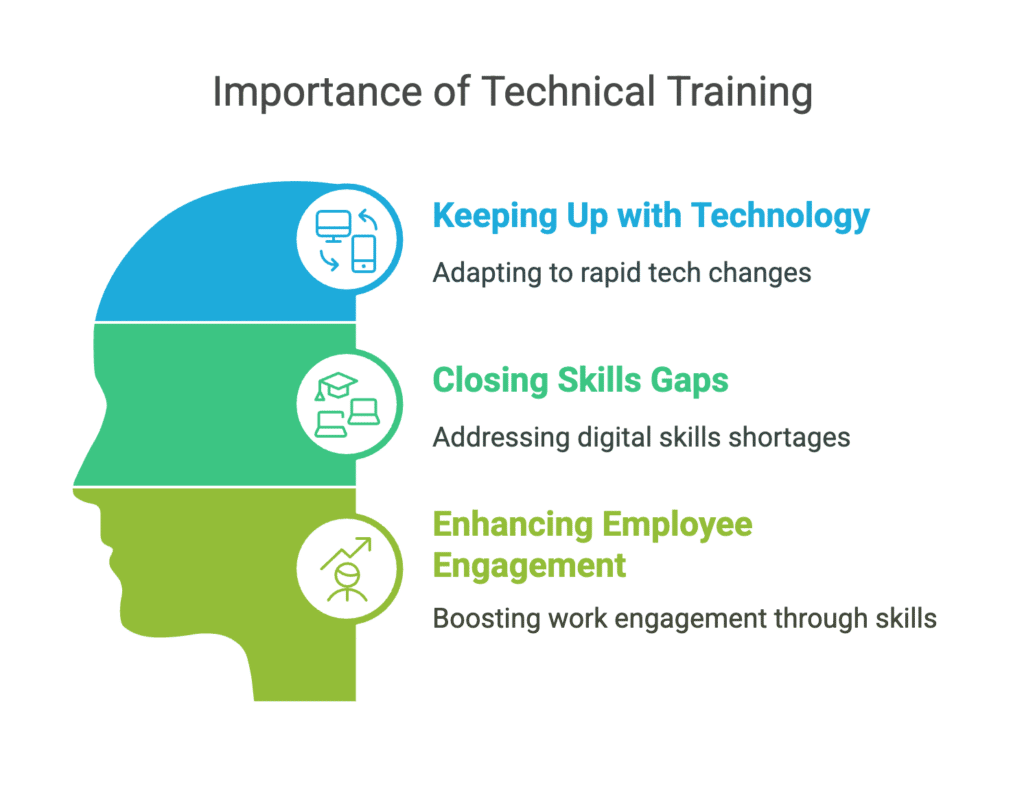
Why technical training matters:
- 87% of executives admit they have a digital skills gap in their teams.
- Employees with up-to-date tech skills are 230% more engaged in their work.
What technical training should include:
- Industry-specific tools
- Cybersecurity 101
- Automation and AI
- Basic coding for non-tech roles
Tech is no longer an IT department problem—it’s everyone’s business.
5. Soft Skills Training
Hard skills might get you hired, but soft skills keep you there. Whether it’s communicating clearly, handling pressure, or just being a great team player, soft skills make all the difference.
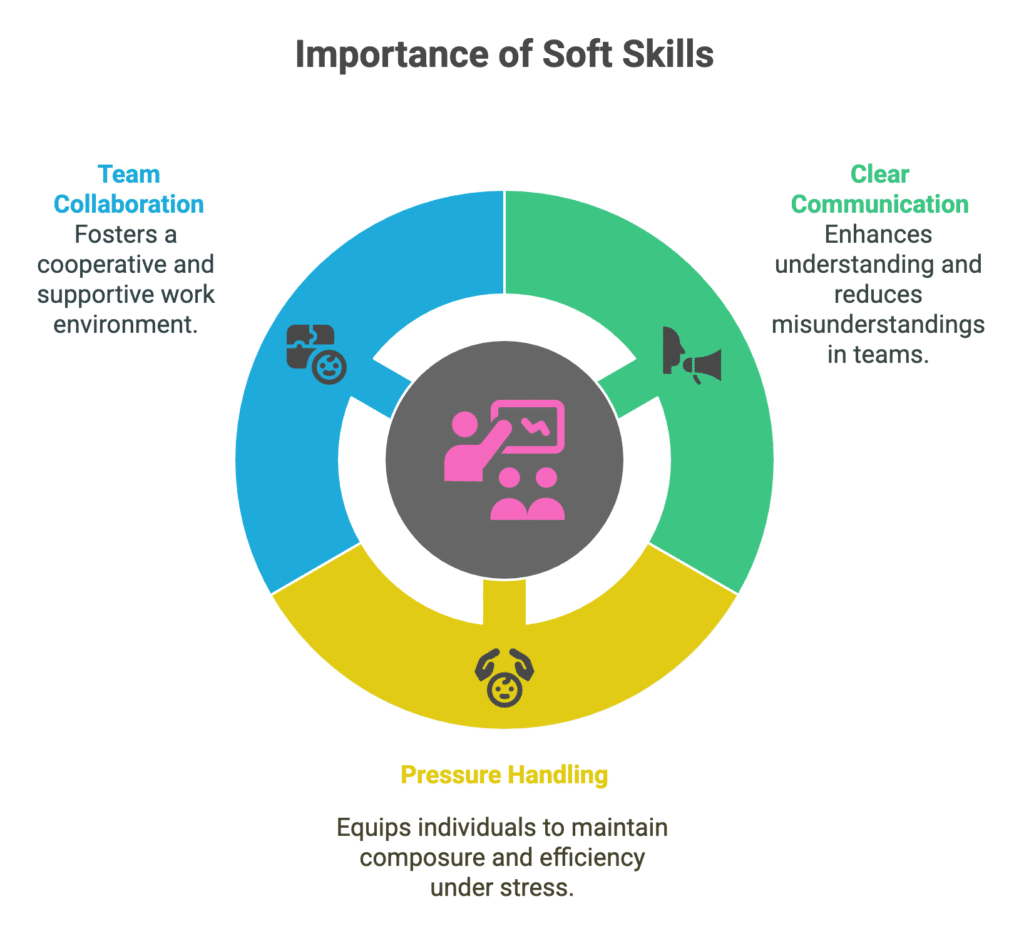
Why soft skills training is invaluable:
- 92% of recruiters say soft skills are as important as technical ones.
- Companies that prioritize soft skills see a 12% bump in productivity.
What should be in the mix:
- Effective communication
- Emotional intelligence
- Time management
- Adaptability
Soft skills create a work environment where people collaborate, innovate, and thrive.
6. Compliance Training
Nobody enjoys compliance training, but we can’t ignore it. Knowing the rules on data privacy and workplace safety helps businesses avoid fines and scandals.
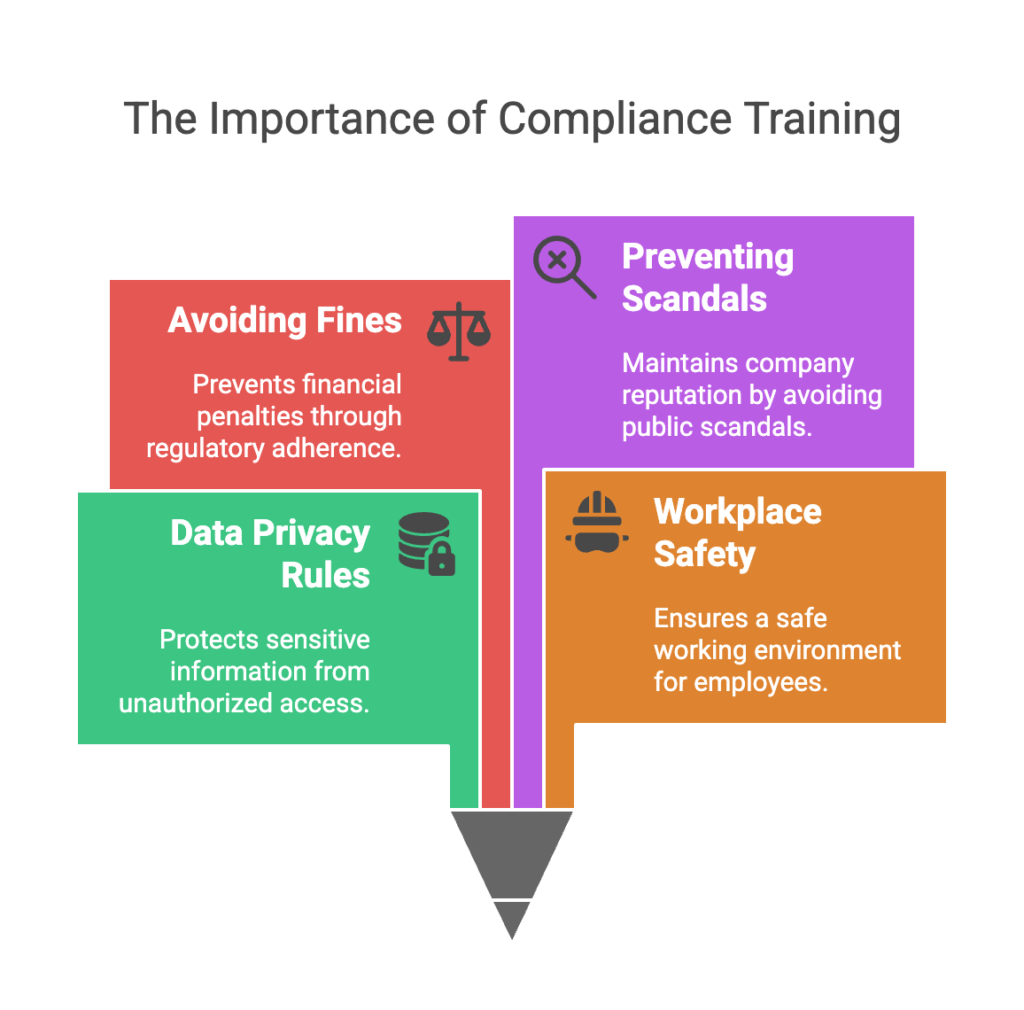
Why compliance training is critical:
- Regulatory violations can cost businesses millions in fines.
- 53% of companies report compliance breaches every year.
What needs to be covered:
- Workplace safety protocols
- Data protection rules
- Anti-harassment policies
- Environmental policies
Staying compliant is less about ticking boxes and more about building trust.
7. Sales Training
Sales teams are the lifeblood of any business, and giving them the right training can mean the difference between closing deals and missing opportunities.
Why sales training is non-negotiable:
- Companies with trained sales teams see a 20% revenue increase.
- 55% of sales reps don’t have the right selling skills.
What great sales training should include:
- Understanding customer pain points like a pro
- Handling objections without breaking a sweat
- Building long-term client relationships
- Mastering CRM tools to keep things organized
A well-trained sales team doesn’t just sell—they build loyalty.
8. Customer Service Training – Because First Impressions Matter
Good customer service can either build up or destroy a brand. If customers have a negative experience, they may leave. Teaching employees how to give excellent service helps to retain clients.
Why it’s essential:
- 86% of customers are willing to pay more for a great experience.
- Bad customer service costs businesses $75 billion every year.
Key elements of customer service training:
- Active listening
- Problem-solving on the spot
- Maintaining a positive attitude
- Product knowledge
Happy customers become loyal customers, and loyal customers bring growth.
9. Health and Safety Training
Ensuring the workplace is safe goes beyond just obeying the rules; it’s also about showing your employees they matter and their opinions count. Offering safety training, whether it’s for emergencies or ergonomics, safeguards both the employees and the company’s money.
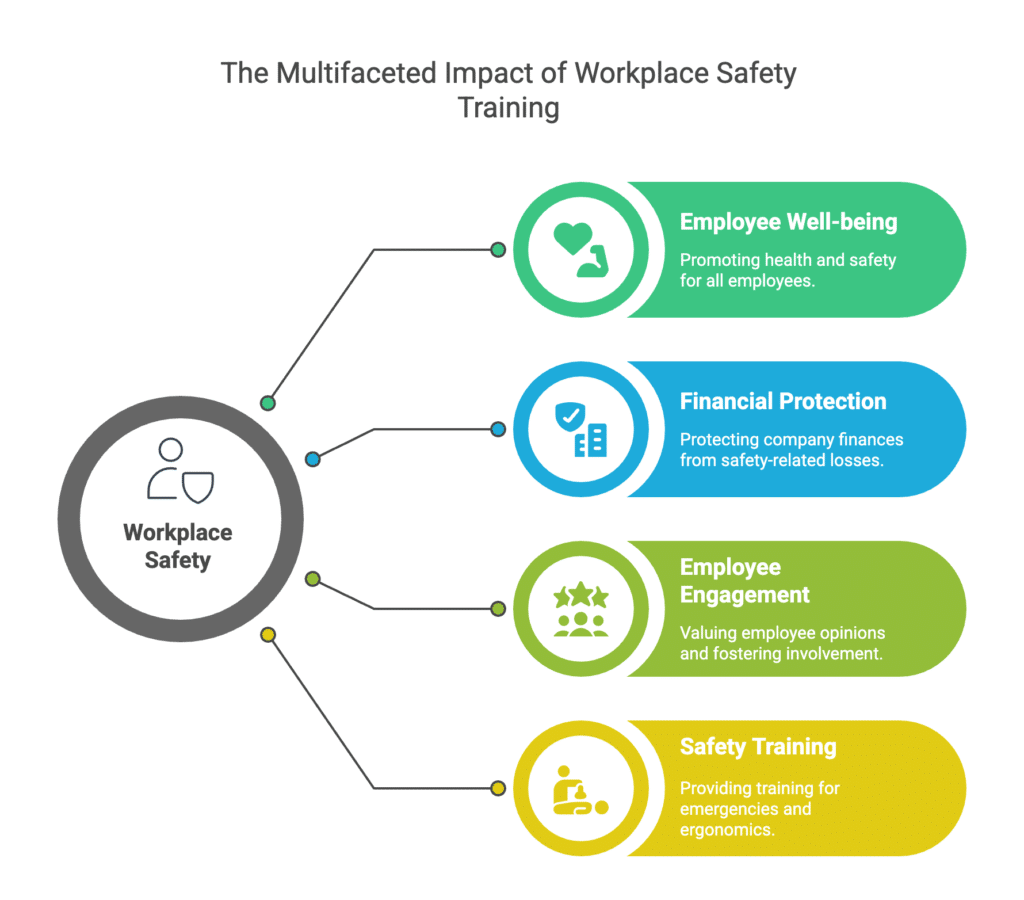
Why it’s important:
- Workplace injuries cost businesses $171 billion annually.
- Companies with good safety programs see 50% fewer incidents.
What should be included:
- Fire safety and evacuation drills
- First aid and emergency response training
- Ergonomic best practices for desk workers
- Mental health awareness
A healthy and safe workplace leads to happier and more productive employees.
10. Remote Work Training
Remote work is not a fading trend—it is the future of corporate working. However, working remotely comes with considerable challenges, and every workforce requires suitable tools and resources to remain productive.
Why remote work training is crucial:
- 74% of companies plan to keep hybrid work models.
- Properly trained remote workers are 22% more productive.
What remote work training should cover:
- Effective virtual communication
- Cybersecurity for home offices
- Time management strategies
- Building team spirit across screens.
Remote work is here to stay; good training ensures success from anywhere.
Final Thoughts
To sum up, good workplace training programs improve skills and promote growth, creativity, and long-term success. Giving your employees the right information boosts their drive, engagement, and productivity, keeping your business competitive in a fast-changing world. Whether it’s improving leadership, technical abilities, or supporting diversity, investing in training helps employees perform better and stay loyal.
Looking to enhance your organization’s learning initiatives? Engagedly offers smart, tailored learning solutions that align with your business goals and employee needs. Discover how Engagedly can help you build impactful training programs and empower your workforce for lasting success.
FAQs on Workplace Training Programs
1. What are workplace training programs?
Workplace training programs are organized learning opportunities created to help employees improve their skills, knowledge, and performance in order to achieve business objectives and boost productivity.
2. Why are workplace training programs important?
Workplace training programs help the workforce remain updated with industry trends, improve job satisfaction, and boost overall business efficiency and competitiveness.
3. How often should employee training programs be conducted?
Training should be conducted regularly, with refresher courses at least annually, to keep employees informed and skilled in evolving workplace demands.
4. What are the most effective types of workplace training programs?
Onboarding, leadership development, technical skills, and compliance training are among the most effective programs for organizational success.
5. How can companies measure the effectiveness of training programs?
Effectiveness can be measured through employee feedback, performance improvements, and key business metrics such as productivity and retention rates.
6. What are the common challenges in implementing training programs?
Challenges that people face include not being very involved, not having enough time, limits on how much money can be spent, and finding it hard to keep track of how well things are going.


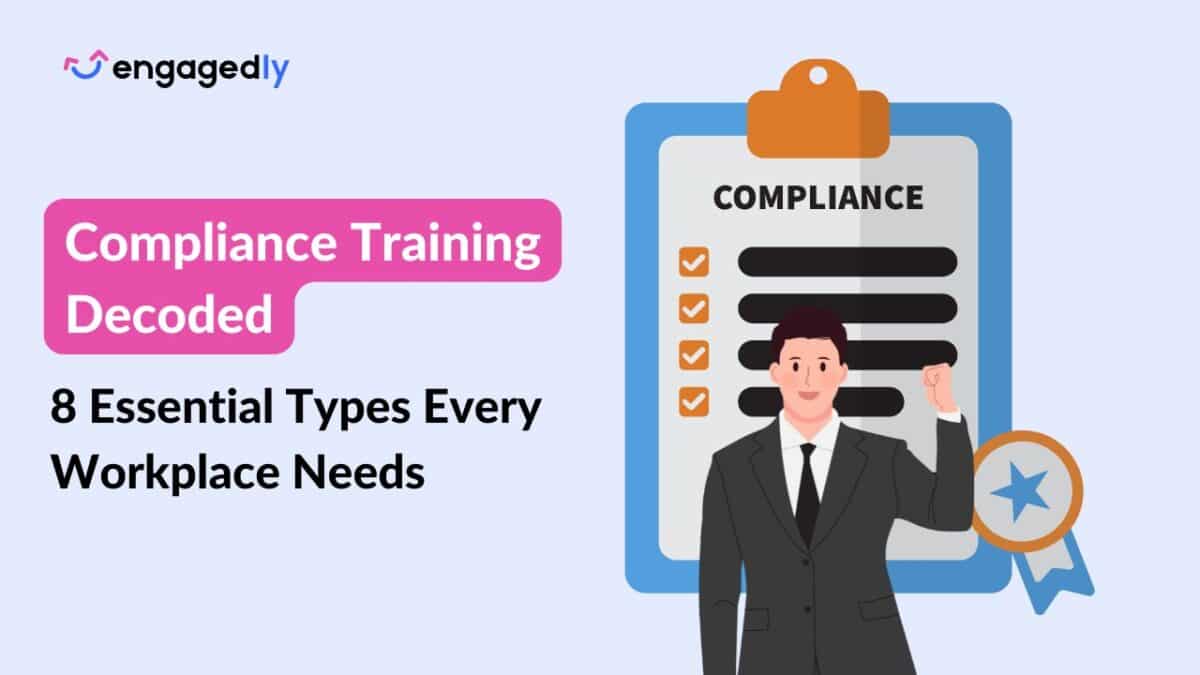


































 Cultivating a learning culture is indispensable for sustained business excellence, as it profoundly influences various facets of an organization, from strategy and creativity to employee engagement and retention. The significance of a learning culture in the workplace is multifaceted, and here’s why:
Cultivating a learning culture is indispensable for sustained business excellence, as it profoundly influences various facets of an organization, from strategy and creativity to employee engagement and retention. The significance of a learning culture in the workplace is multifaceted, and here’s why:


















 Let us look at some reasons to understand the
Let us look at some reasons to understand the










